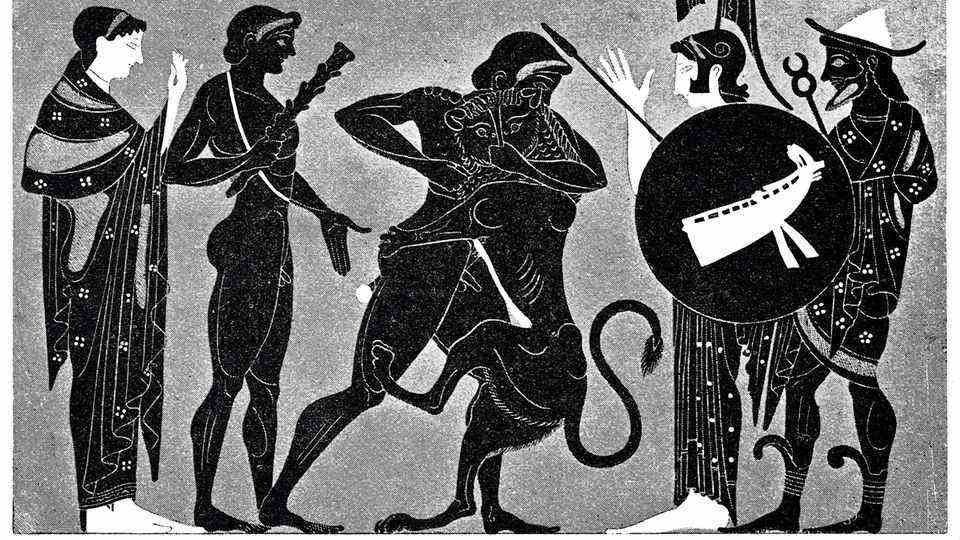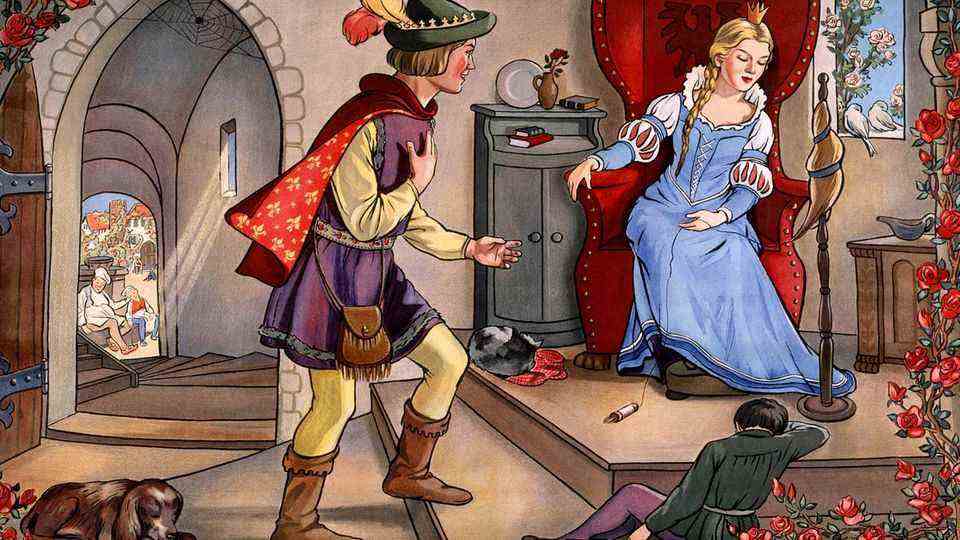Around the turn of the century
Heroin in tampons and morphine for toddlers – when hard drugs were part of everyday life
To make teething easier in children, there was Mrs. Winslow’s Syrup – a morphine-based drug.
© Glasshouse Images // Picture Alliance
Industrially produced drugs were used for all kinds of ailments from the middle of the 19th century. Heroin was considered a good cough remover, morphine a sleep aid. Children also got the hard drugs.
The therapy was a complete success: In three children – three, four and eight years old – the drug worked against whooping cough. Other children too the the new preparation, which was registered in 1898 by a predecessor company of Bayer, would have tolerated this well. “Without a trace of unfavorable side effects,” the Therapeutic Monthly Bulletin of 1899 quotes the experiment. The name of the drug: heroin.
Heroin, cocaine, morphine – in the 19th century, researchers and chemists succeeded in extracting the active ingredients from medicinal plants. The effect was known for centuries, but now the production of the active ingredients has been industrialized. Instead of unsafe ointments, teas and the like, patients were now given an effective preparation. “Heroin and cocaine were used medically in the past, with great success and the medical profession was enthusiastic, as were the patients,” said Tom Bschor, chief physician of the psychiatric department of the Schlosspark Clinic in Berlin and spokesman for the “Psychiatry” working group of the German medical community’s drug commission ” to the “Deutschlandfunk. The means people took were nothing more than hard drugs.
Opiates for young children
The new products worked: Morphine was the forerunner of heroin and was isolated from opium by the pharmacist’s assistant Friedrich Wilhelm Adam Sertürner from Paderborn at the beginning of the 19th century. He named the drowsy substance morphine after Morpheus, the Greek god of dreams. It was the forerunner of heroin and was stirred into all sorts of remedies. Even teething children received the “Mrs. Winslow’s Soothing Syrup“a remedy that mainly consisted of morphine and alcohol.
Heroin, Bayer’s “heroic” drug, was used against almost everything: pain, depression, respiratory diseases or cancer. Heroin was even given to morphine patients as a substitute because it was not addictive. This assessment also stemmed from the fact that heroin was swallowed – and not injected. So it seemed slower and much less powerful.
Two doctors from Berlin are also said to have carried out tests with the new miracle drug heroin. Instead of four weeks, they only needed a few days. “The cough of their patients disappeared, tuberculosis patients no longer spit blood, and even the terminally ill found new courage to live,” writes Harro Albrecht in “Pain – A Liberation Story“About the effect at that time.” The world had never seen anything like it. “
Heroin without clinical testing
According to doctors, there were hardly any side effects with heroin. Maybe a little constipation and dizziness – but that’s about it. There were several reasons why heroin or cocaine could take off. On the one hand: “Heroin comes from a time when the approval criteria for drugs were much more slack,” said Dieter Steinhilber, Professor of Pharmaceutical Chemistry at the University of Frankfurt, a few years ago.time“Instead of complex, expensive tests under clinical supervision, employees and their relatives were tried out. Bayer’s heroin was an immediate sales success: one year after its market launch, it was already available in more than 20 countries. In 1898, the pharmaceutical manufacturer sold only 45 kilograms of the new agent , around ten years later it was already 783 kilograms. But: Other pharmaceutical companies also offered heroin products, and so all strata of the population accepted it themselves Tampons are said to be soaked with heroin have been (against venereal diseases).
Another reason for the success of the preparations: The drum was promoted for ointments, juices, pills and powders. Large advertisements advertised the benefits of the funds, and readers found the packs printed on recipe cards, flyers or in calendars. Mothers who put their happy children to bed or toddlers playing – that family idyll as a motif apparently worked.
But it was not all rosy, as early as the turn of the century, doctors reported to warn about the new miracle drugs. They showed that heroin – in high doses – is very addictive. The first hero-dead scratched the picture of the remedy. The first opium conference took place in 1912. There, the participants agreed that opiates should be strictly controlled and that they should only be available in pharmacies. However, the outbreak of the First World War made it difficult to implement these resolutions internationally.
About heroin and aspirin
The wounds of the soldiers brought opiates an unprecedented sales, so that the addiction to these drugs also “Soldier’s disease“. However, it was clear: It is not a miracle drug, but a hard drug. The USA swung itself up to be a pioneer in the fight against the substances – here heroin sold particularly well. It was not until 1925 that the League of Nations Opium Commission reached an agreement Heroin ban, Germany ratified this ban in 1929. The ban made production unattractive for manufacturers. Bayer almost completely stopped production, and in 1931 it was all over.
Felix Hoffmann, chemist at Bayer, is considered to be the inventor of diacethylmorphine – which Bayer marketed under the name heroin. But he also developed another remedy that became more profitable for Bayer: aspirin.



